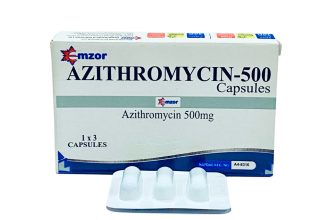Experience persistent muscle stiffness or joint pain? Rumalaya Oil offers a potential solution. Its unique blend of herbal extracts targets localized discomfort, promoting relaxation and improved mobility. Apply directly to affected areas for soothing relief.
This oil features potent ingredients like Nirgundi and Shallaki, known for their anti-inflammatory and analgesic properties. Regular application can help reduce inflammation, ease stiffness, and improve range of motion. Many users report noticeable improvement in discomfort within days of consistent use.
Remember to follow the instructions for application. Massage the oil gently into the skin until fully absorbed. For optimal results, use twice daily, or as needed. If you have specific concerns or pre-existing conditions, consult your physician before using Rumalaya Oil.
Disclaimer: Results may vary. This information is not a substitute for professional medical advice.
- Rumalaya Oil: A Detailed Guide
- What is Rumalaya Oil and its Key Ingredients?
- Rumalaya Oil for Muscle and Joint Pain Relief: How Does it Work?
- Targeting Inflammation
- Easing Muscle Tension
- Improving Circulation
- Analgesic Effects
- Application Techniques for Optimal Results with Rumalaya Oil
- Common Conditions Treated with Rumalaya Oil
- Precautions and Potential Side Effects of Rumalaya Oil
- Rumalaya Oil vs. Other Topical Analgesics: A Comparison
- Where to Buy Rumalaya Oil and What to Look For
- Frequently Asked Questions about Rumalaya Oil
Rumalaya Oil: A Detailed Guide
Apply Rumalaya Oil twice daily, gently massaging it into the affected area. Consistent use is key for optimal results.
Rumalaya Oil contains a blend of herbal extracts including Nirgundi, Shallaki, and Maharasnadi. These ingredients work synergistically to provide pain relief and reduce inflammation.
Common uses include managing pain associated with muscle sprains, backaches, and arthritis. Many users find relief from joint stiffness and discomfort.
For optimal application, warm the oil slightly before use. This enhances absorption and increases comfort.
| Ingredient | Potential Benefit |
|---|---|
| Nirgundi | Reduces pain and inflammation |
| Shallaki | Supports joint health and mobility |
| Maharasnadi | Provides analgesic and anti-inflammatory effects |
Always read the product label before use. Consult your doctor if you have any concerns or pre-existing conditions. Discontinue use if irritation occurs. Store in a cool, dry place.
While many report positive experiences, individual results may vary. Manage expectations realistically. This information is for educational purposes and not a substitute for professional medical advice.
Rumalaya Oil is a topical application. Avoid contact with eyes. If accidental contact occurs, rinse thoroughly with water.
What is Rumalaya Oil and its Key Ingredients?
Rumalaya Oil is a herbal analgesic oil used to relieve pain and inflammation associated with muscular aches, sprains, and rheumatic conditions. It offers a natural approach to pain management.
Its key ingredients work synergistically. The primary active components include: Nirgundi (Vitex negundo), which possesses anti-inflammatory and analgesic properties; Shallaki (Boswellia serrata), known for its anti-inflammatory and pain-relieving effects; and Maharasnadi Kwath, a unique herbal formulation recognized for its anti-inflammatory capabilities. These ingredients, combined with other carefully selected herbs, create a potent blend designed to address various musculoskeletal issues.
Specifically, Nirgundi helps reduce swelling and pain, while Shallaki supports joint health and reduces stiffness. Maharasnadi Kwath adds another layer of anti-inflammatory action, further supporting the overall pain-relieving effect of the oil.
The oil’s formulation is designed for topical application, allowing for direct action at the site of pain and inflammation.
Rumalaya Oil for Muscle and Joint Pain Relief: How Does it Work?
Rumalaya Oil’s pain-relieving action stems from a synergistic blend of herbal extracts. Each ingredient contributes specific properties to target different aspects of pain and inflammation.
Targeting Inflammation
Powerful anti-inflammatory components like Nirgundi (Vitex negundo) and Shallaki (Boswellia serrata) reduce swelling and redness at the site of pain. These herbs work by inhibiting the production of inflammatory mediators, thus alleviating discomfort.
Easing Muscle Tension
The oil’s warming effect, combined with ingredients like Mahatikta (Gymnema sylvestre) and Bala (Sida cordifolia), promotes muscle relaxation. This helps to relieve muscle spasms and stiffness, improving range of motion and reducing pain associated with tense muscles.
Improving Circulation
Increased blood flow to the affected area is another key mechanism. Ingredients like Eranda (Ricinus communis) and Devadaru (Cedrus deodara) may contribute to improved circulation, bringing nutrients and oxygen to help repair tissues and reduce pain signals.
Analgesic Effects
Some components offer direct pain-relieving (analgesic) effects. The combined action of these ingredients creates a multi-pronged approach to pain management, providing both localized relief and addressing underlying causes of muscle and joint pain.
Application Techniques for Optimal Results with Rumalaya Oil
For best results, apply Rumalaya Oil twice daily, gently massaging it into the affected area.
- Consistent Application: Regular use is key. Maintain a consistent application schedule for noticeable improvement.
- Gentle Massage: Use a circular motion. This enhances absorption and improves blood circulation.
- Warm Application: Gently warm the oil between your palms before application. This increases its penetration.
- Area Coverage: Apply to the entire affected area, extending slightly beyond the limits of pain or discomfort.
- Skin Sensitivity: If you have sensitive skin, perform a patch test on a small area first before widespread use.
For specific conditions:
- Muscle Pain: Focus your massage on the affected muscle group, paying attention to areas of tightness or tension.
- Joint Pain: Apply around the joint, gently massaging along the joint line. Avoid applying directly onto open wounds or broken skin.
- Back Pain: Apply to the lower back, along the spine, and surrounding muscles. Consider seeking professional help for chronic or severe back pain.
Remember to wash your hands after each application. Consult a healthcare professional if symptoms persist or worsen.
Common Conditions Treated with Rumalaya Oil
Rumalaya oil finds application in relieving pain and inflammation associated with various musculoskeletal conditions. Many users report relief from the discomfort of rheumatoid arthritis, osteoarthritis, and muscular aches.
Its warming properties make it helpful for treating back pain, neck pain, and sciatica. Gentle massage with Rumalaya oil can alleviate muscle stiffness and spasms.
Beyond muscle and joint issues, some individuals use it to address localized pain stemming from sprains and strains. The oil’s analgesic action can provide temporary relief from the associated discomfort.
It’s important to note that while Rumalaya oil offers potential benefits, it’s not a substitute for medical advice. Always consult a healthcare professional for diagnosis and treatment of any health concern.
Precautions and Potential Side Effects of Rumalaya Oil
Always perform a patch test before applying Rumalaya Oil to a large area. Apply a small amount to your inner arm and wait 24 hours to check for any allergic reactions like redness, itching, or swelling. If a reaction occurs, discontinue use immediately.
Avoid contact with eyes and mucous membranes. If accidental contact occurs, rinse thoroughly with cool water.
- Some users report mild skin irritation at the application site. This typically resolves quickly upon discontinuation.
- Rare instances of increased sensitivity to sunlight have been reported. Consider limiting sun exposure during use, particularly during peak hours.
- Pregnant or breastfeeding women should consult their doctor before using Rumalaya Oil.
- Individuals with known allergies to any of the ingredients should avoid using this product.
Follow the manufacturer’s instructions carefully regarding application frequency and amount. Do not exceed recommended dosages.
Store Rumalaya Oil in a cool, dry place, away from direct sunlight and heat.
- Keep out of reach of children.
- If you experience any unusual symptoms or your condition worsens, stop using the oil and seek medical advice.
This information is for general knowledge and does not replace professional medical advice. Consult a healthcare provider for any health concerns or before making any decisions related to your health or treatment.
Rumalaya Oil vs. Other Topical Analgesics: A Comparison
Choose Rumalaya Oil if you prefer a herbal approach with a focus on muscle pain and inflammation relief. Its blend of natural ingredients offers a gentler alternative to some synthetic options.
Rumalaya Oil primarily targets muscle aches, joint stiffness, and inflammation. Its key advantage lies in its Ayurvedic formulation, potentially appealing to those seeking natural pain relief. However, its effectiveness might vary depending on individual responses and the severity of the condition. Expect a pleasant aroma and easy application.
Compare this to NSAID-based topical analgesics like diclofenac or ibuprofen gels. These medications provide fast-acting pain relief and anti-inflammatory action, often demonstrating stronger effects for acute pain. However, they can cause skin irritation in some individuals and might not be suitable for long-term use due to potential side effects.
Capsaicin creams offer a different mechanism of action. They work by depleting substance P, a neurotransmitter involved in pain signaling. This leads to reduced pain perception, particularly for nerve-related pain. However, the initial application can cause a burning sensation, and they aren’t as broadly effective for all types of muscle pain.
Recommendation: Consider your specific needs and pain type. For mild to moderate muscle aches and a preference for herbal remedies, Rumalaya Oil might be a good fit. For acute, severe pain or specific nerve pain, NSAID gels or capsaicin creams could be more appropriate. Always consult a healthcare professional before starting any new treatment, especially if you have pre-existing conditions or are taking other medications.
Where to Buy Rumalaya Oil and What to Look For
Find Rumalaya Oil at reputable online pharmacies like Amazon or iHerb, and check local pharmacies or health food stores. Always verify the seller’s legitimacy.
Inspect the packaging carefully. Look for an intact seal and clear printing, including the batch number and expiry date. A blurry label or damaged packaging indicates potential tampering or substandard storage.
Compare prices from several sources. While significant price variations might signal a problem, be wary of offers that seem too good to be true. Check customer reviews for feedback on the seller’s reliability and the product’s quality.
Purchase only from authorized distributors. The manufacturer’s website often lists official retailers; cross-reference this list with your chosen vendor. This safeguards you against counterfeits.
Store Rumalaya Oil correctly after purchase. Keep it in a cool, dark place to maintain its efficacy.
Frequently Asked Questions about Rumalaya Oil
Q: How often should I apply Rumalaya Oil? Apply twice daily, gently massaging it into the affected area.
Q: Is Rumalaya Oil suitable for children? Consult a pediatrician before using it on children under 12.
Q: Can I use Rumalaya Oil during pregnancy? Pregnant or breastfeeding women should consult their doctor before use.
Q: Does Rumalaya Oil have any side effects? Some individuals may experience mild skin irritation. Discontinue use if this occurs.
Q: How long does it take to see results? Results vary, but many users report relief within a few days of consistent use.
Q: Can I use Rumalaya Oil with other medications? Inform your doctor about all medications you are taking before using Rumalaya Oil.
Q: Where can I buy Rumalaya Oil? It’s available at many pharmacies and online retailers.
Q: What are the key ingredients? The main components include sesame oil, various herbs, and essential oils.
Q: How should I store Rumalaya Oil? Store in a cool, dry place away from direct sunlight.
Q: Is Rumalaya Oil suitable for all types of pain? It’s primarily used for muscle and joint pain relief. It may not be appropriate for all types of pain.










